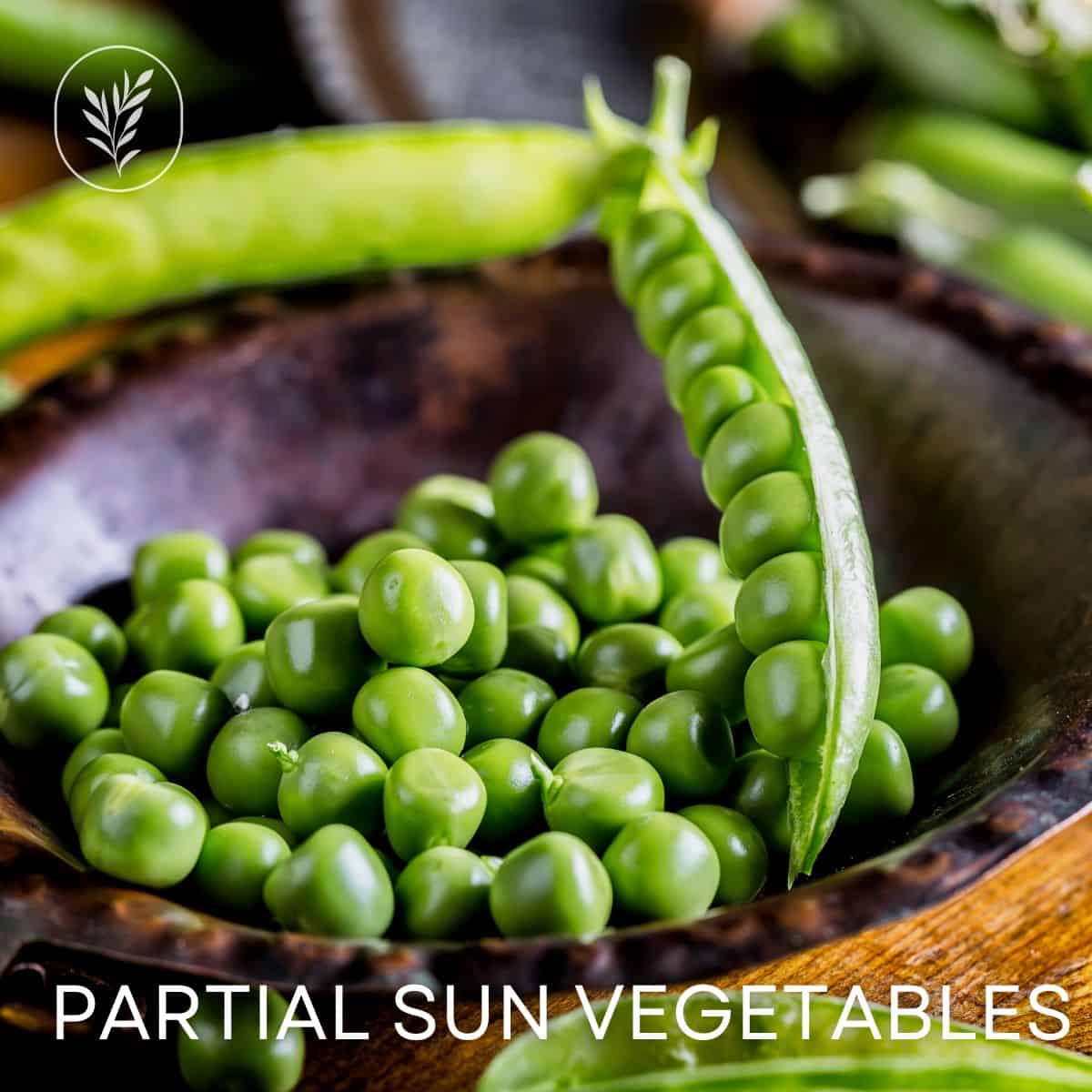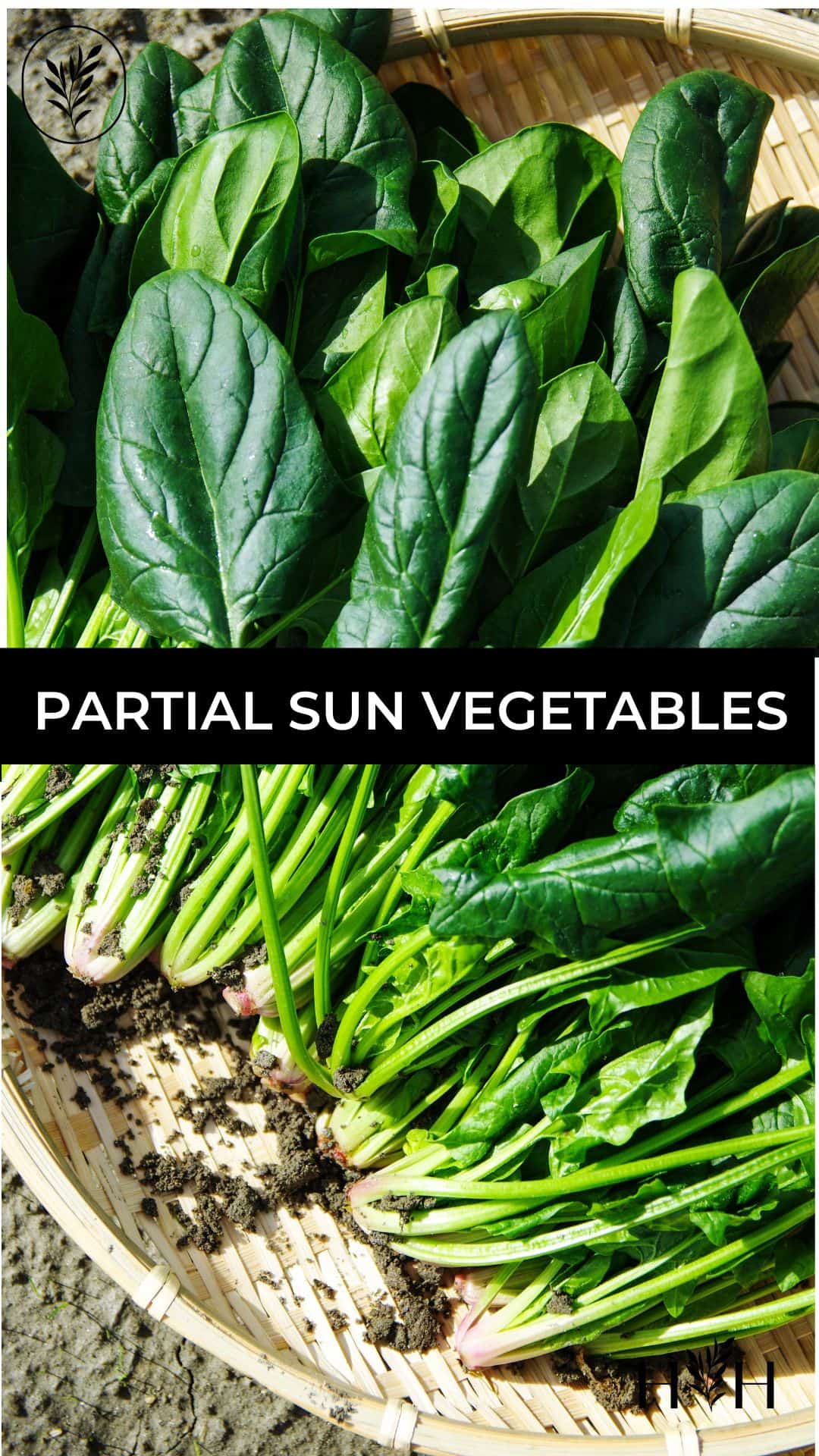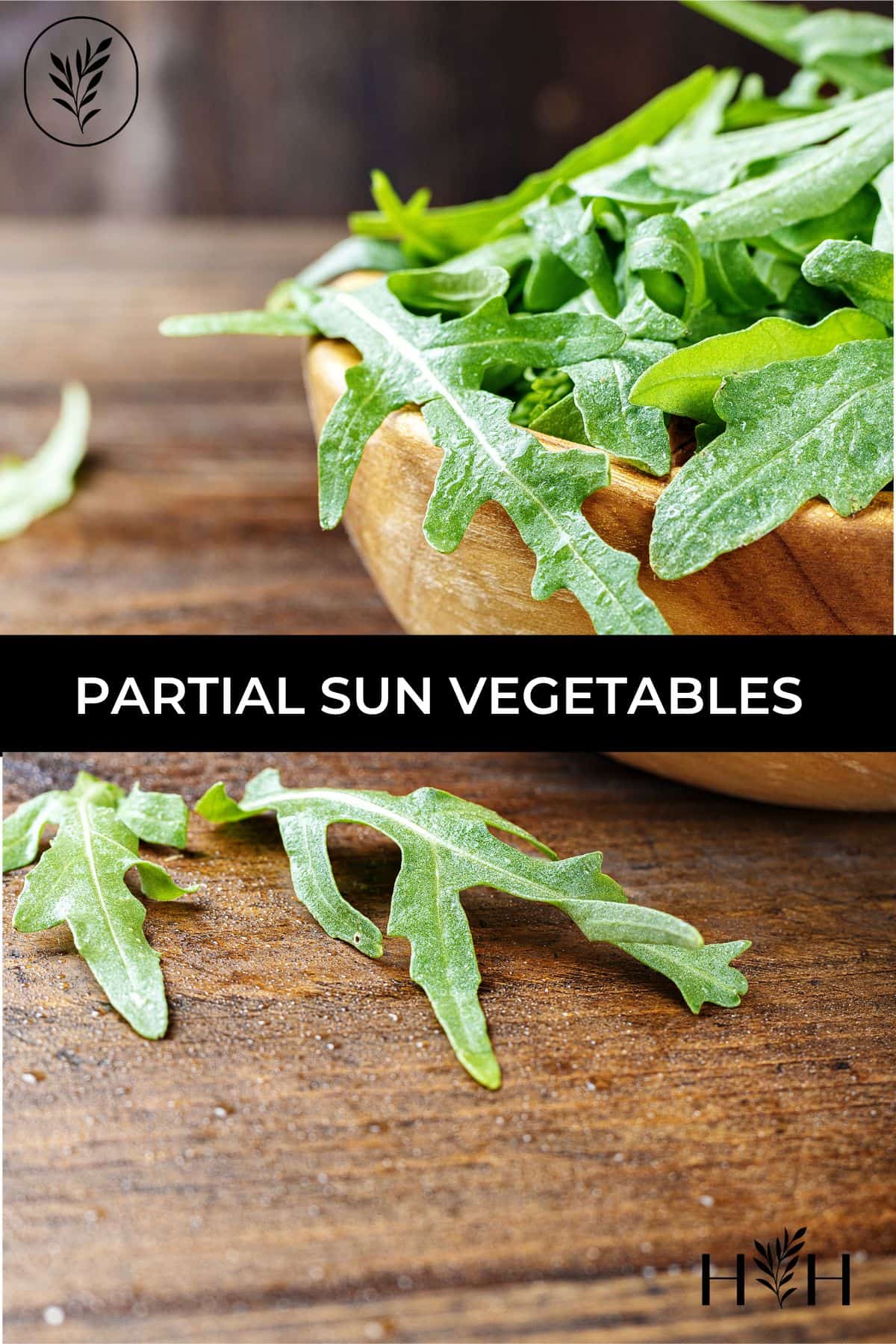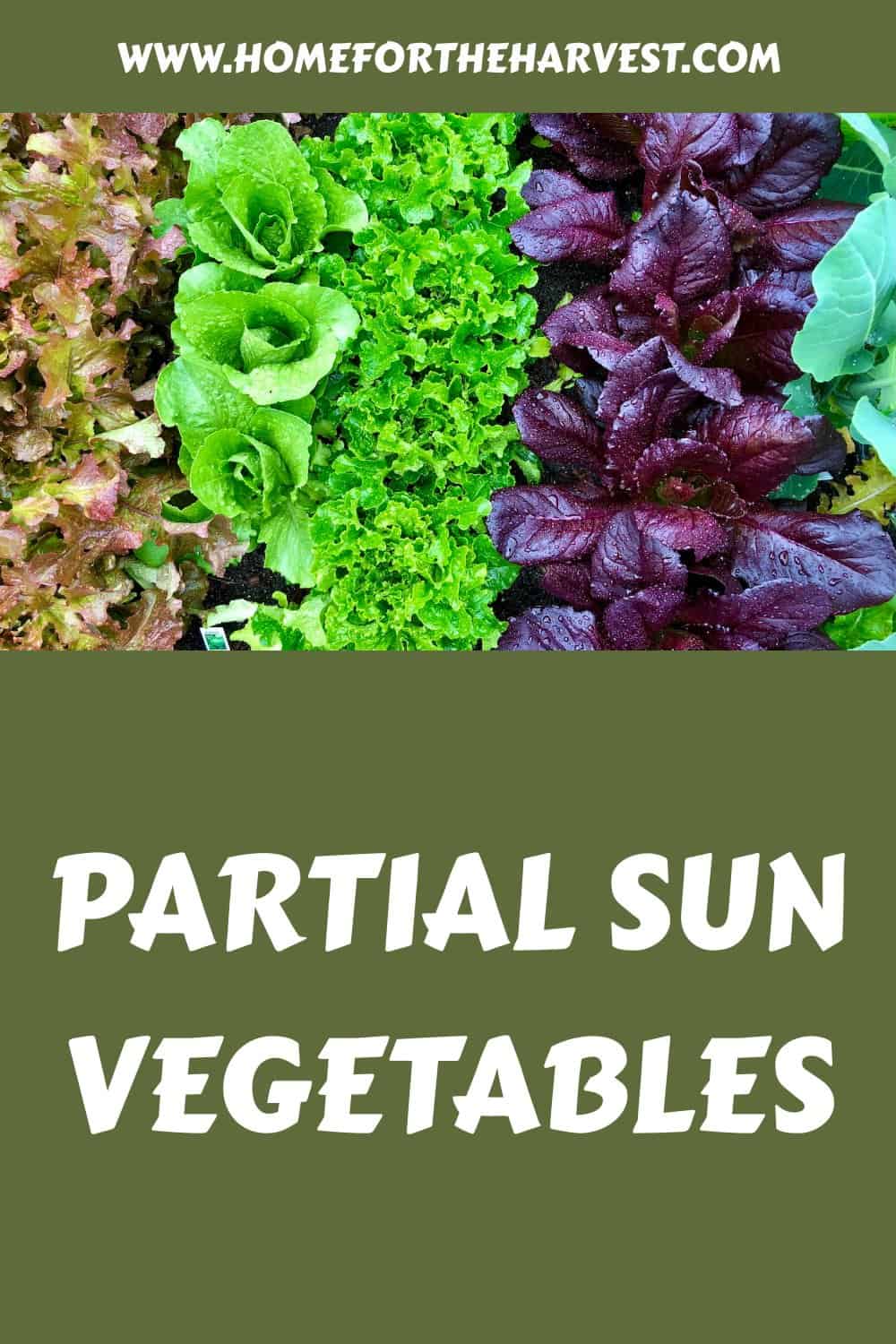If you’re new to gardening, you may be under the impression that all plants and vegetables require lots of sunlight to grow, and while there is truth to this—not all require full sunlight. While most vegetables need roughly six hours of sunlight, there are many vegetables that can and will thrive when grown in partial shade. Often, it’s safe to assume that vegetables grown for their leaves, stems, and buds will do well in partial shade.
Depending on your garden location, you may find you have patches of land that are partially covered by leaves of trees or somehow get more afternoon shade than other areas. Luckily there are plenty of options to choose from if you’re eager to grow in these shaded areas. If you’d like to learn more about which can be grown in a bit of shade, here are 10 vegetables you can grow in partial sun!
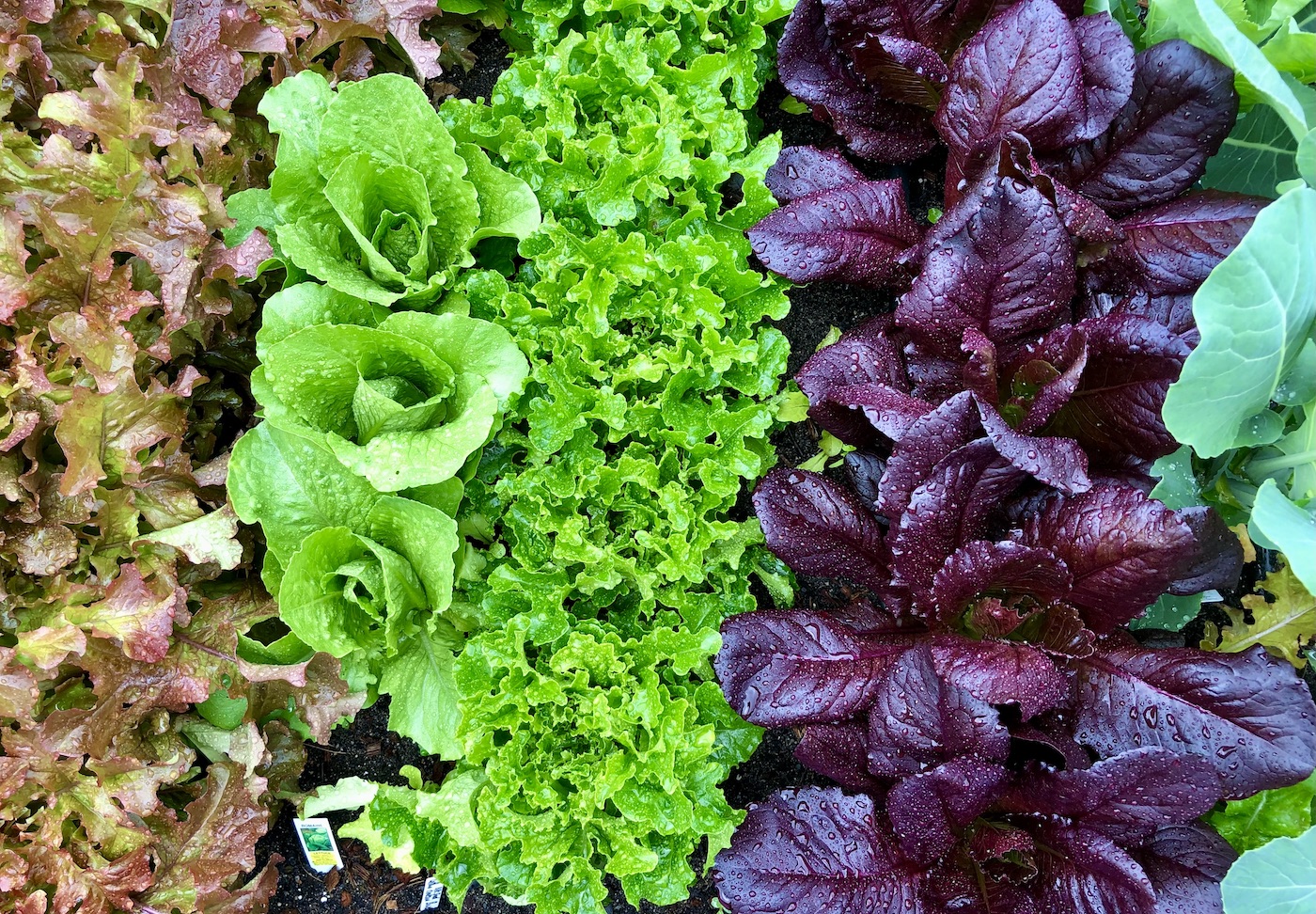
1. Lettuce
Lettuce (Lactuca sativa) is known as an annual plant from the Asteraceae family. It’s most known for being grown as a leafy green vegetable (often found in salads or sandwiches). It’s best to plant lettuce during early spring and in the early fall. Many find covering lettuce with a shade cloth, or planting them in shady areas, will prevent the leaves from burning. Plant sunburn is what can happen when a plant, like lettuce, gets too much sunlight. Sunflowers are a great companion for lettuce because this tall flower will easily provide partial shade. Fun fact: They are both a part of the Asteraceae family!
2. Arugula
Arugula (Eruca vesicaria) is an annual vegetable from the Brassicaceae family. It’s known for being grown as a leaf vegetable (another salad favorite)—and for its fresh but tart and bitter taste. It’s best to plant arugula in early spring or late summer as it does well with cooler temperatures. Under the right conditions, arugula will grow faster than you might expect. To ensure your arugula has the best conditions to thrive, you want to ensure it’s planted in rich, well-drained soil. It can be grown in full sun, but it can grow in light shade as well.
3. Kale
Kale belongs to a type of cabbage known as Brassica oleracea. Kale is another one of those salad greens that have grown in mass popularity over the last decade. The best growing season for kale is late winter and early spring. This is because these delicious greens are a cool-weather crop meaning it does best when grown in cooler weather. This leafy green vegetable loves moist environments and requires rich, well-drained soil. Shady conditions for growing are acceptable—especially if its soil requirements are met.
4. Spinach
As you can see, there are a variety of leafy greens that can thrive while growing in partial sun. Spinach (Spinacia oleracea) is a flowering plant known for its rich green leaves. Cool-weather plants like spinach are best planted in late winter and early spring. Like many other cool-season crops, this vegetable needs rich and well-drained soil. Partial shade areas are perfect for planting spinach because it doesn’t require hours of direct sunlight.
5. Broccoli
One of the best vegetables that can be grown in partial shade is broccoli. Broccoli (Brassica oleracea var. italica) is a part of the cabbage family. These dark green edible plants are known for their distinct, large flowering head, thick stalk, and high nutrition value. It’s best to plant broccoli in early spring or late summer as this plant needs cool weather to mature. Partial shade vegetables such as broccoli need rich but moist soil to ensure the best results as well.
6. Cauliflower
Cauliflower is also in the Brassica oleracea family along with broccoli—they plant well next to each other as well. Like broccoli, cauliflower is also known for its larger flowering heads. It’s an annual plant that’s known for its distinct white color. Most varieties are best planted in early spring such as the month of April because they won’t do later in the year with hot temperatures. Planting in full sun areas should be out of the question entirely if the weather is too hot. This vegetable is a cool-season veggie for a reason—and requires a lot of specific conditions and attention to detail to grow without issue.
7. Peas
Peas (Pisum sativum) are annual plants known for their small and round seedsfound in pods together. They are another cool-season crop that is best planted from late fall to early spring depending on location. It’s vital you do your research to get the timing just right in your area. You can’t grow these vegetables in too much heat or sun. Partial sun is great if you’re eager to grow peas. You also have to ensure the soil is rich and retains all the moisture this plant requires for optimal progress.
8. Beets
Beets (Beta vulgaris) are root vegetables that are one of the few of their kind that can do well in partial sun. These distinctly-colored vegetables are best planted in early spring and in loamy soil. They’re also a cold-season vegetable that thrives in the shoulder seasons and may struggle during hot summer weather.
9. Swiss chard
Swiss chard (Beta vulgaris) is known to be a colorful crop whose leaves can be both green and red while the stalks are often white, yellow, or red. Leafy vegetables such as chard are often used as an ingredient in various dishes such as salads and stir fry. They are best planted in the spring, two to four weeks before the last frost date. Otherwise, you can grow it in the fall roughly 40 days before the first frost date in your area.
Not only is chard a gorgeous edible ornamental plant but it’s fairly low maintenance. As long as it’s planted in the specified seasons prior, with rich and well-drained soil, you should expect to see progress. It’s a good idea to give these vegetable crops a lot of sunlight but it can and will tolerate shaded areas as well.
10. Brussels sprouts
Brussels sprouts are a part of the cabbage family. They are known for their edible buds and are typically very small, appearing to look like tiny cabbages that can easily fit in the palm of your hand.
These are best planted in early spring or mid-to-late summer because they require a longer growing season (80 to 100 days). Brussels sprouts have a slower growth process than other types of veggies so don’t be alarmed if you’re expecting immediate results but don’t get them. This slow process is a good thing! Brussels sprouts do well when watered often in the heat of summer and kept cool—so if you have an area with less sunlight, consider this popular food crop!


